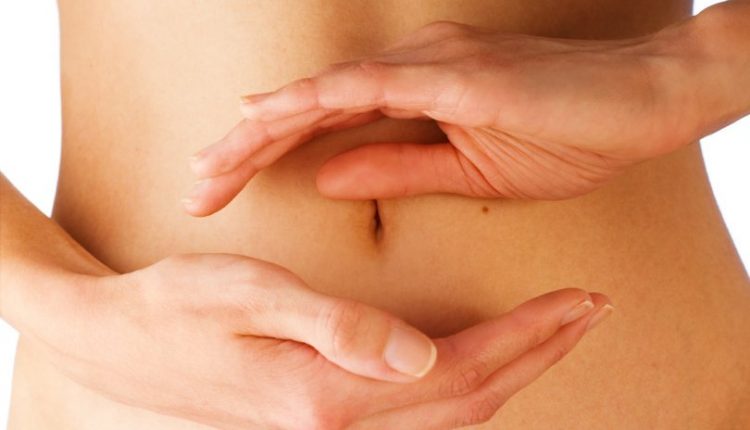
Endometriosis: symptoms, diagnosis and treatment
Endometriosis is a very common gynaecological disease that affects women of childbearing age with a prevalence of 5-10%
The disease is characterised by the presence of endometrial-like tissue located on the ovaries, tubes, peritoneum, rectum and pelvic ligaments.
The endometrium is the mucous membrane that lines the uterine cavity and its monthly shedding gives rise to menstruation.
Endometriotic lesions also flake off during menstruation, creating chronic irritation and inflammation of the organs where they are lodged.
Signs and symptoms of endometriosis
Affected women experience very intense premenstrual and menstrual pain, pain during intercourse, and widespread pelvic pain, which often cannot be controlled by common anti-inflammatory drugs.
Early intervention is crucial as 25-40% of women who fail to procreate are affected by endometriosis.
In many women, endometriosis can be very debilitating due to widespread pelvic pain.
The onset of symptoms at a young age is usually associated with a more severe course of the disease.
Diagnosis of endometriosis
The diagnostic suspicion of endometriosis arises whenever women report very painful menstruation, especially if it occurs a few years after the first menstruation.
A pelvic or transvaginal ultrasound scan is used to check for endometriosis nodules in the ovary.
But often the disease can manifest itself as a myriad of tiny nodules located on the pelvic ligaments that cannot be detected by ultrasound examination.
The Ca125 assay, an ovarian marker used in the follow-up of women with malignancies, has higher but non-specific values, as it is also elevated in cases of inflammation.
The diagnosis of certainty is made by laparoscopy, which allows biopsy sampling and histological confirmation of the disease.
Although laparoscopy is an invasive technique, it is useful as it allows, at the same time as the diagnosis, the removal of the larger lesions and the demolition of the smaller ones, and thus also has a therapeutic function.
Endometriosis therapy
At present, there are no decisive therapies, as common painkillers relieve and/or resolve the pain but not the lesions.
The success of laparoscopic surgical therapy depends very much on the skill of the surgeon, but unfortunately recurrences are quite frequent.
Hormonal therapies with progestins or the pill taken without interruption serve to reduce menstrual flows even within the lesions, but are not decisive.
GnRH analogues are drugs that induce a pharmacological menopause with consequent reduction of endometriotic lesions, but they are expensive and develop menopausal symptoms such as hot flashes, decreased libido, and depletion of bone mass.
Added to these is a progestin that manifests a specific effect on endometrial tissue both inside and outside the uterus, and therefore also on endometriotic lesions.
The progestin partially inhibits the secretion of gonadotropins centrally, resulting in a decrease in the production of oestradiol, the hormone that causes the endometrium to grow both uterine and extra-uterine.
At the level of ectopic endometrial tissue, progestin inhibits the proliferation of endometrial cells and reduces the proliferation of blood vessels.
This dual action results in an important anti-inflammatory effect that significantly reduces pain but also endometriotic lesions.
Dienogest-based progestogen has been approved by the Italian Medicines Agency (AIFA), is available in band C (not reimbursed by the Health Service) and represents an innovation for the treatment of endometriosis.
Read Also:
Emergency Live Even More…Live: Download The New Free App Of Your Newspaper For IOS And Android
Transvaginal Ultrasound: Preparation, Procedure, Advantages And Disadvantages
What Is The Papilloma Virus And How Can It Be Treated?
What Is Papilloma Virus And How Does It Occur In Men?
Pap Test, Or Pap Smear: What It Is And When To Do It
Rocketing Vaccine Cost Warning
The Vaccine Against HPV Lowers The Risk Of Relapse In Positive Women
HPV Vaccine: Why Vaccinating Against The Papilloma Virus Is Important For Both Sexes
Gynaecological Cancers: What To Know To Prevent Them
Vulvodynia: What Are The Symptoms And How To Treat It
What Is Vulvodynia? Symptoms, Diagnosis And Treatment: Talk To The Expert
Accumulation Of Fluid In The Peritoneal Cavity: Possible Causes And Symptoms Of Ascites
Accumulation Of Fluid In The Peritoneal Cavity: Possible Causes And Symptoms Of Ascites
What’s Causing Your Abdominal Pain And How To Treat It
Pelvic Varicocele: What It Is And How To Recognise The Symptoms
Can Endometriosis Cause Infertility?
Transvaginal Ultrasound: How It Works And Why It Is Important
Candida Albicans And Other Forms Of Vaginitis: Symptoms, Causes And Treatment
What Is Vulvovaginitis? Symptoms, Diagnosis And Treatment
Vaginal Infections: What Are The Symptoms?
Chlamydia: What Are The Symptoms And How To Treat It
Chlamydia, Symptoms And Prevention Of A Silent And Dangerous Infection
Tumours Of The Adrenal Gland: When The Oncological Component Joins The Endocrine Component
Papilloma Virus Infection And Prevention
Fibromyoma: The Uterine Fibroma


